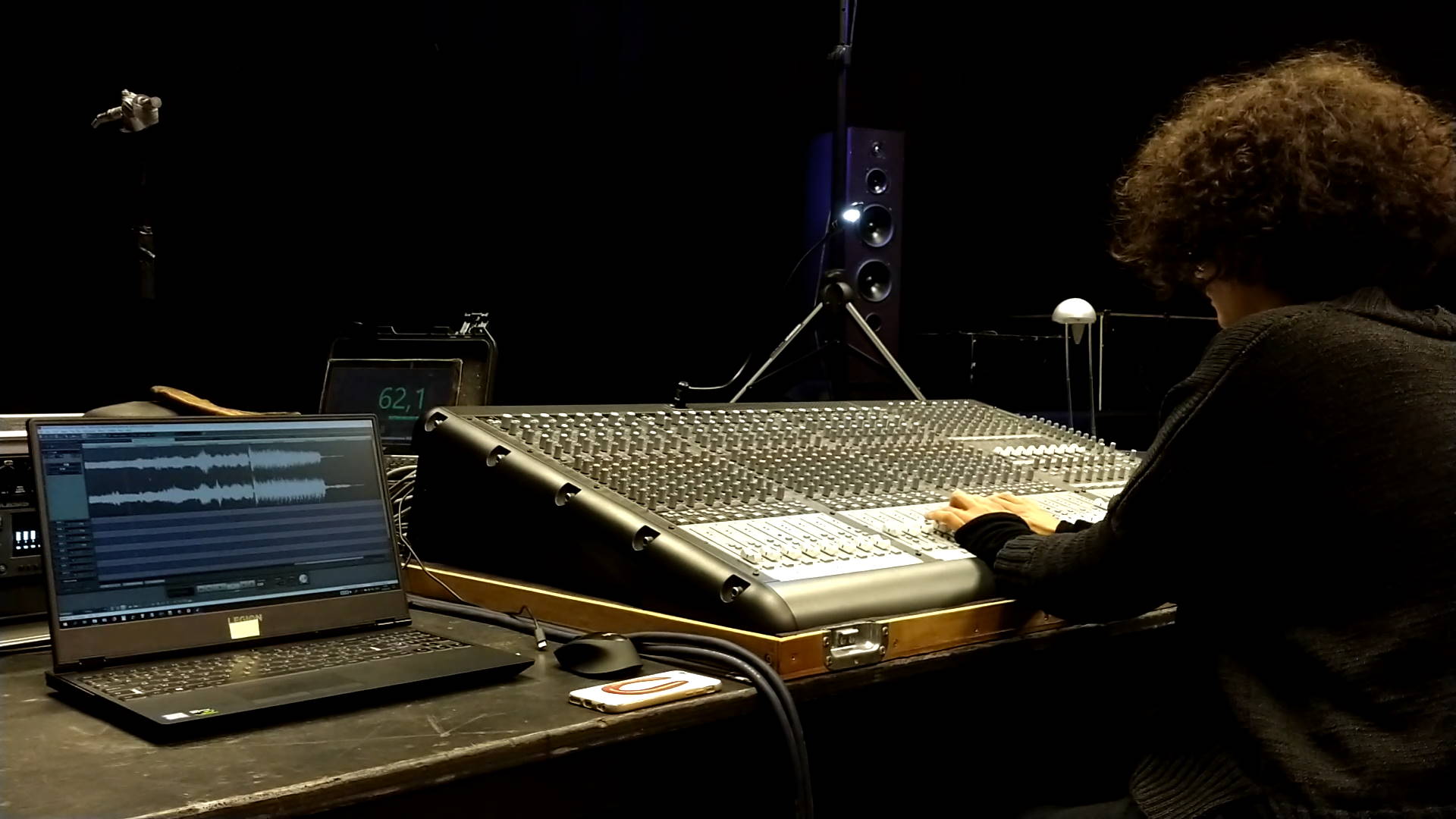Listening to our environment
You sit there and your ears register the sound around you. If you suddenly hear something unexpected, without any hesitation you immediately look in the right direction where the sound is coming from. Our brains are very good at this and it takes no effort on our part. We are so used to it that we don't pay any attention to it. This wonderful way of perceiving only becomes apparent when something goes wrong with our listening sense.
Mono and stereo
In sound reproduction technology we first worked for almost a century with a single sound source. That was called mono. There was the phonograph with records or with a cylinder, and later the wire and tape recorder. Actually, the term mono only started to be used generally when the novelty of stereo playback arrived around the second world war. In 1948, Philips experimented with "duplicate concerts" in which the audience did not see the orchestra, but a dark room with a stereophonic recording reproduced. The audience was very enthusiastic about this at the time. Stereophony only became common practice a long time later.
This idea of spatial reproduction has continued to roll on. People still use the stereo display at home today (2012), but the research into the real spatial sound experience is still continuing. Here I divide this research into two domains:p>
- Technical research into true-to-life spatial reproduction
- The musical research into the value of spatiality
The technical research for true-to-life spatial reproduction
This research tries to develop techniques that give the listener the illusion of reproducing sound at very precise locations in space. Special speaker set-ups or headphones are used in this research. Recordings are also made specifically for listening with a particular playback device. An example of this is the artificial head recording technique, which must be listened to with headphones.
This technical research is very interesting to follow, but is beyond the scope of this page.
The research into the musical value of spatiality
This musical research started much earlier than the first sound reproductions. In the second half of the 16th century, the Venetian school experimented with spatiality by placing choirs and/or instrumental ensembles at different places in the performance space. This made it possible to achieve unusual echo effects.
It is actually bizarre that this spatiality is given so little attention in music. In contemporary music, musicians are sometimes dispersed, but one can hardly speak of consistent research in the use of spatial aspects. In popular media, spatiality is only applied to films, in which case all the film sounds are usually reproduced from five sound sources. Three sources are located to the left, right and centre of the projection screen, and two more are located to the left and right at the rear. Usually, this spatial reproduction is limited to a few effects, such as a car driving up from the back.
As far as I know, the research into the musical applications of spatiality is almost exclusively done in contemporary electronic art music: electroacoustic music.
Acousmonium
The Acousmonium that was realised at GRM (Groupe de Recherches Musicales) in 1974 has been a guiding principle. A pragmatic approach was chosen: if you want the sound to come from a certain point in space, then place a loudspeaker there.
The GRM's acoustic monuments therefore consisted of 80 loudspeakers. Bayle wrote on the cover of his CD in 1993 that it was "a utopia" "dedicated to pure listening ... as a penetrable projection field, arranged for immersion in sound, in a spatialised polyphony, articulated and directed."
Several approaches to spatialisation can be applied. For example, there are composers who choose to create a sound composition with a left-right position where the sound is placed or moved between 2 extremes. During a concert situation, this composition is then sent to the desired speaker pairs with the help of a mixing table. The listener hears a prepared studio composition and receives as a performed component the dynamic placement in space, or as Bayle says, the projection in space.
Another approach is to use much more than two channels and to integrate the spatial component into the studio recording. All the sounds that compose the composition are reproduced separately via their own sound channel. During a concert, this results in a sound reproduction that can be perceived with a much finer resolution. In a surround configuration, it can be heard as if you were sitting in the conductor's place, hearing all the instruments in concert 360 degrees all around you. This is truly a concert experience, which cannot be compared to any living room or headphone listening.
Internetdilemma
All this creates a website dilemma. Today, you place music online as an introduction. At the same time, however, you also include a reduction in the musical experience of this music. The site visitor then gets an idea of the genre, but gets no idea of what is missing from the Internet display. If you do this with opera or symphonic music, everyone realises that real listening in the concert hall is quite something different. With electro-acoustic music, we should more or less expect the listener to read through a text like this to become aware of the lack of an extra dimension, but since you are reading this, it seems that this has already been achieved at least with you. And maybe, dear reader, you also will become a concert visitor one day?
(DV - 2021)
laatste update: 2021.07.26








